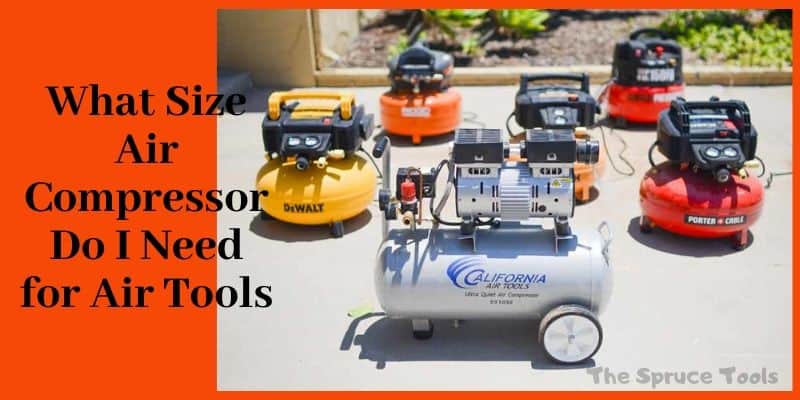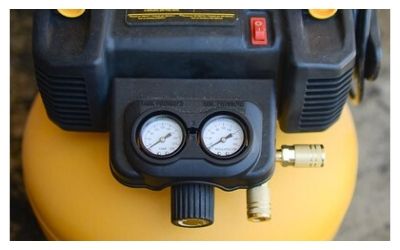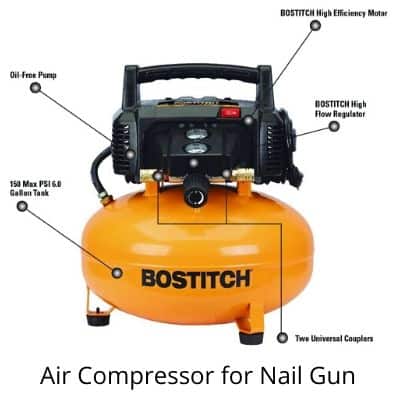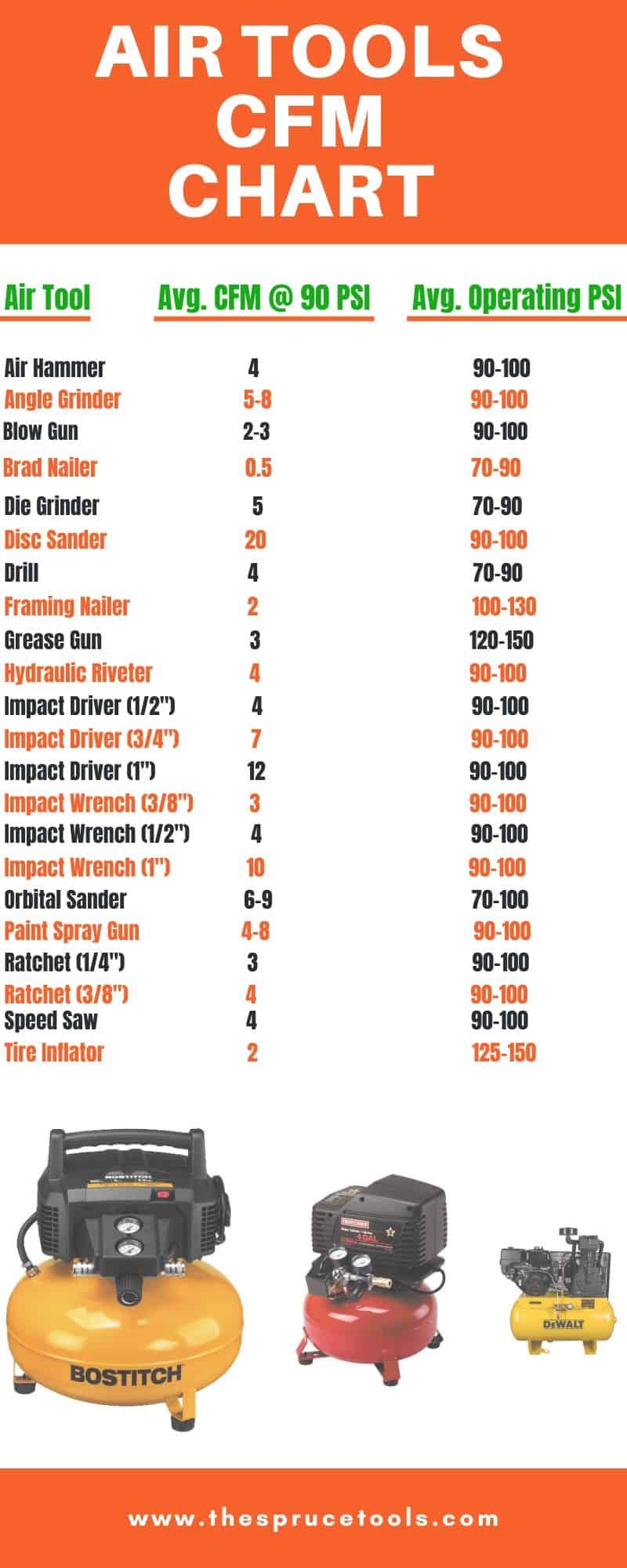As DIYers, we like to have the most useful tools in our garage. There are many types of tools we can use, but some of them are more popular than the rest. That’s the case of the air tools.
You may like them more or less, but in many circumstances, air tools are more superior than, say, the electric type.
However, if you own air tools, you’ll need an air compressor to make them work properly. Here’s when it may get tricky, because now you may be asking yourself what size air compressor do I need for air tools or how big of an air compressor do you need for air tools.
Worry not! In this article, we’ll answer that question. Furthermore, we’ll recommend some of the most efficient air compressors for you air tools.

How to Choose the Correct Size Air Compressor for Air Tools?
Depending on the task at hand, and your air tools, the size of the air compressor makes a huge difference. Fortunately, since many brands offer their own compressors, variety is something you won’t miss.
However, how to choose the right one? Well, you want to consider the tank’s size, for sure, but you also have to look at the CFM delivered. What does that mean? We’ll explain.
CFM, or SCFM – How Does it Affect the Air Compressor’s Size?
While looking for an air compressor, you must check out their CFM and SCFM inevitably. CFM means cubic feet per minute, which helps to describe the air compressor’s filling rate.
Considering that gases are capable of changing pressure in diverse temperatures and humidity, CFM varies depending on the weather.
On the other hand, SCFM stands for standard cubic feet per minute, and it measures the performance put up by the air compressor at a specific temperature and pressure. With these measurements, you’ll be able to compare different machines.
See the video tutorial for understanding SCFM and PSI
Regardless of the tools they’re using, be it electric or air tools, many people would choose a compressor that delivers the highest CFM or SCFM possible. The size of the tank won’t matter at all if the air compressor doesn’t offer a refill rate higher than the air the tools draw.
If this information is a bit hard to understand, later on the article, we’ll include a chart describing how much CFM the most popular air tools need. You can use that for reference as you check out the air compressors available.
What’s the Right CFM for My Tool?

There’s a quick method to find out just how much CFM your air compressor need to deliver. All you have to do is look at the air tool’s CFM requirements, and then multiply that by 1.5. By doing that simple equation, you’ll get the CFM capacity needed from an air compressor.
Tank Size
Regularly, the tank’s size is more important if you’re using tools that require continuous compressed airflow. For example, if you’re using grinders, sanders, or similar air tools, they’d require a larger tank because it’d be better if the motor doesn’t cycle on and off constantly.
Be aware that there are a lot of tank sizes available. While searching for an air compressor, you’ll find some units offering as little as 1 gallon and other units with a tank as large as 80 gallons.
Of course, depending on the nature of your projects, you may need tanks offering more or less capacity. Because of that, you must figure out at an early stage what it is that you want to accomplish exactly, as it’ll help you choose an air compressor with the perfect size for your tools.
What Size Air Compressor Do I Need for Impact Wrench?
An impact wrench is an air tool that draws a lot of air, which is why you’ll need an air compressor with a rather medium-sized tank, and plenty of CFM power. Most of the size air impact wrench needed 4-5 cfm air flow @ 90 PSI.
Luckily, we’ve got what you need exactly, and that’s the NorthStar Single Stage 2HP Air Compressor.
This compressor has plenty of power for the impact wrench. It features a powerful motor to supply your air tools efficiently. Since it delivers 5 CFM @ 90 PSI, you’ll be able to use the compressor for a variety of air tools that work well with short bursts.
What Size Air Compressor for Nail Gun?

The nail gun is yet another tool that draws air in high amounts. If you do nailing in rapid successions regularly, then your air compressor must feature a tank up to the task.
Extra 5% Off Coupon: 25EFBFAFF
Ideally, you’d want to go for an air compressor featuring a 6-gallons tank. The options are many, but we have a particular pick that would work well with roofing nailers.
The air compressor you want to check out is the BOSTITCH Pancake Air Compressor.
Fairly enough, this compressor from BOSTITCH features a 6.0-gallon tank, or 22.7 L. The SCFM delivered is 2.6 @ 90 PSI, which may not seem like much, but it’s still a good amount for the nail gun.
What Size Air Compressor is Better for Air Ratchet Tool?
Another common tool found in most garages is the air ratchet tool. Fortunately, less is better in this case, meaning that you won’t need neither a large tank nor high CFM.
With 3 to 4 CFM, and a tank offering 5 to 6 gallons of capacity, the air ratchet tool should work just fine. Still, since tools vary depending on the brand, make sure to check the requirements of your very own air ratchet tool.
Check out is the BOSTITCH Pancake Air Compressor for air ratchet tools.
What Size Air Compressor Works Best for Painting?
Picking the right air compressor size will also allow you to do other tasks more efficiently. You can paint large surfaces like a house or even fill some tires quicker. What size is the most adequate for these purposes, though?
For Painting
Considering that painting a house requires constant spraying, a larger size would be the best choice. Take a look at air compressors featuring 10-gallon tanks, or similar. These larger tanks would help you avoid having to pause every few minutes to refill.
If your purpose is to paint a car, you could use a slightly smaller air compressor. Either a 6 or an 8-gallon tank would do this task efficiently. Still, if you’re not happy with these sizes, you could go for a 30-gallon tank too. Ultimately, it’d be your decision.
To Fill Tires
Alternatively, you could use the air compressor to fill tires too. For that purpose, you’ll need a simple compressor featuring between 3 to 6 gallons of tank capacity, and delivering 2 to 3 of CFM.
That amount of power is all you’ll need to provide the continuous air dispersal required to fill tires. The smaller, the better, as it’d be easier to carry the BOSTITCH air compressor around the house if it’s necessary.
Air Tools CFM Chart
But perhaps you don’t want to use any of the tools or do the tasks mentioned above. If that’s the case, here’s a chart including the most common air tools, and their requirements, to give you a better idea of the air compressor they need for optimum performance.
Extra 5% Off Coupon: 25EFBFAFF
As you read this information, keep in mind the following.
First, the chart offers average CFM requirements. The data described here may not be exact, but it’s pretty close to the actual requirements from each one of the air tools mentioned. Always take the time to check your own tools to see what their specific requirements are.
Air tools base their rating on 25% of duty cycle, which means in use for 15 seconds out of 60 seconds. If your purpose is to use continuous tools like grinders, you’d have to multiple the CFM quantity by four to be more accurate.

Infographic resource: www.garagetooladvisor.com
Final Thoughts
What size air compressor do I need for air tools is a question that even professionals ask themselves. Their jobs depend on using the right tools, so it’s alright to have the same doubt.
Even though there are other features to consider while purchasing an air compressor, the CFM delivered and tank capacity are the most important considerations that you should keep in mind at all times. Remember, a bigger tank doesn’t necessarily mean a better air compressor.


